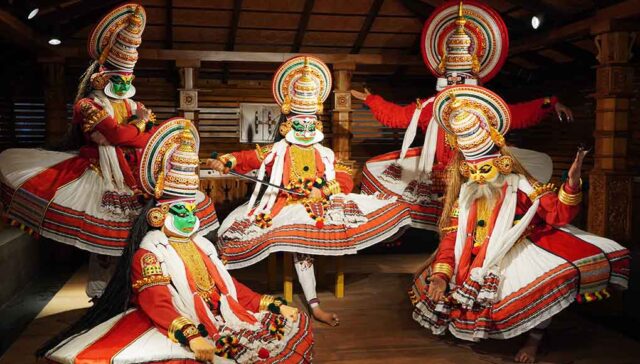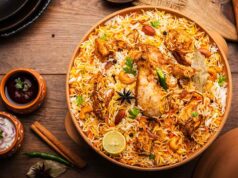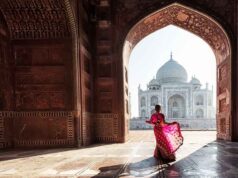Are you intrigued by the vibrant culture of India? Have you been wanting to gain a better understanding of the Indian way of life but not sure how? If your answer is yes, then you are in for a treat! I’ve been traveling and studying Indian culture for years now, so I’m excited to share with you some interesting facts about one of the most fascinating countries in the world.
In this article, we’ll look at 5 unique aspects of India’s enduring culture that may come as surprises. We’ll dive into its religious beliefs, traditions, music styles and art forms. By the end of this article, I will have provided enough insight for you to appreciate India’s rich and captivating culture from an informed perspective. So let’s get started!
1. Religious Diversity: A Melting Pot of Beliefs
The variety of religions in India not only adds color and richness to its cultural fabric, but also promotes mutual respect and understanding among its people. The coexistence of different religious practices allows individuals to embrace their own beliefs while acknowledging the importance of others’.
India’s largest religion is Hinduism, with millions of followers across the country. Hindus believe in a multitude of deities and practice rituals aimed at spiritual growth and enlightenment. Islam, on the other hand, is the second-largest religion in India, with a significant number of Muslims residing here. Their faith centers around surrendering oneself to Allah and following the teachings of Prophet Muhammad.
Sikhism originated in Northern India during the 15th century as a reaction against prevailing social inequalities. Sikhs emphasize equality and strive for justice through selfless service to humanity. Christianity has also found a place within India’s religious landscape due to colonial influences from European countries like Portugal and Britain.
Lastly, Buddhism was born in ancient India under Prince Siddhartha Gautama who later became known as Buddha. This path focuses on attaining enlightenment through meditation and compassion towards all living beings.
In conclusion, India’s diverse religious landscape unites people from different backgrounds by fostering tolerance and appreciation for each other’s beliefs. This harmony contributes immensely to the nation’s rich cultural heritage while shaping individual identities within this vast tapestry of faiths.
2. Festivals Galore: Celebrating Life with Gusto
One of India’s most beloved festivals is Navratri, a nine-night celebration dedicated to the Hindu goddess Durga. During this time, people come together for lively dances called Garba and Dandiya Raas. The air is filled with the rhythmic beats of drums and the clinking sound of wooden sticks as participants move in synchronized steps, swirling around in vibrant traditional attire.
Navratri is not just about dancing; it also holds deep spiritual significance. Each night represents a different form of Goddess Durga, who symbolizes feminine power and victory over evil. People fast during these nine days as a way to purify their bodies and minds, seeking blessings from the divine.
Another important festival in India is Raksha Bandhan, which celebrates the bond between brothers and sisters. On this day, sisters tie colorful threads called “rakhis” on their brothers’ wrists as a symbol of love and protection. In return, brothers give gifts or money to their sisters as a token of appreciation.
The diversity of festivals in India reflects its rich cultural heritage. Whether it’s celebrating the harvest season with Pongal or flying kites on Makar Sankranti, each festival brings joy and unity among people from different backgrounds. These celebrations showcase India’s ability to blend ancient traditions with modernity while preserving its unique identity.
Like what you are reading on 5 Things India? Check out some more interesting articles about India. 5 things India is known for globally
3. Classical Music: A Symphony of Emotions
The essence of Indian classical music lies in its ability to transport the listener into a realm where emotions are heightened and stories unfold. Each raga has its own distinct mood and character, carefully crafted through a combination of specific notes and rhythmic patterns. From the soothing strains of Raga Yaman that evoke feelings of tranquility, to the lively rhythms of Raga Bhairavi that inspire energy and excitement, each raga tells a unique story.
One can imagine sitting under a starry night sky, listening to the mesmerizing notes of Raga Malkauns as it weaves tales of longing and introspection. The gentle sway of the melody creates an atmosphere filled with melancholy yet tinged with hope. In contrast, Raga Todi takes us on a journey through vibrant landscapes brimming with joyous celebrations – picture yourself amidst colorful festivities as this raga fills the air with infectious happiness.
Indian classical music is not only about melody; it also encompasses intricate rhythm patterns that add depth and complexity to compositions. Talas or rhythmic cycles guide musicians in creating elaborate compositions using tabla or other percussive instruments. The enchanting interplay between melody and rhythm creates a tapestry that captivates listeners and immerses them in an unparalleled musical experience.
In conclusion, Indian classical music is much more than just sound – it is an art form that touches hearts, transcends boundaries, and tells stories without words. Its power lies in its ability to evoke emotions ranging from serenity to exhilaration through carefully structured ragas and complex rhythmic patterns. It truly is a treasure trove waiting to be explored by all who have ears open for beauty beyond words.
4. Traditional Dance Forms: Graceful Expressions in Motion
Bharatanatyam, originating in the temples of Tamil Nadu, is characterized by its intricate footwork and expressive hand gestures. The dancers wear vibrant costumes adorned with glittering jewelry, enhancing the visual spectacle. With each movement, they convey emotions so effortlessly that it seems as if their bodies are speaking a language of their own.
Kathakali, on the other hand, hails from Kerala and is known for its larger-than-life makeup and exaggerated facial expressions. The performers don elaborate headdresses and brightly colored costumes that add to their enchanting presence on stage. It’s fascinating how they can embody various characters simply through their facial expressions and body movements.
Odissi is a dance form from Odisha that exudes gracefulness with every step. Dancers embellish themselves in beautiful silk sarees or lehengas adorned with traditional jewelry pieces like maang tikkas and anklets. Their fluid movements along with synchronized group formations create an ethereal ambiance that leaves spectators mesmerized.
Mohiniyattam from Kerala holds a unique charm of its own by combining elements of Bharatanatyam and Kathakali. The dancers don elegant white sarees with golden borders called mundus, which accentuate their graceful movements even more. Their subtle yet expressive gestures bring stories to life as though painting pictures in mid-air.
Each dance form showcases India’s rich cultural heritage while reflecting the diversity within the country itself. From intricate footwork to dazzling costumes, these traditional dances have an undeniable allure that captivates audiences on both national and international stages.
5. Rich Artistic Heritage: From Miniatures to Mughal Architecture
One of the most intriguing aspects of India’s artistic heritage is its diverse range of miniature paintings. These delicate and intricate works of art depict a wide array of subjects, from mythological tales to scenes from everyday life. The artists who create these masterpieces use vibrant colors and fine brushstrokes to bring their subjects to life. Each stroke is carefully placed, conveying emotions and narratives in an exquisite manner.
Another significant aspect of India’s artistic heritage is its magnificent Mughal architecture. One cannot help but be awe-struck by the grandeur and opulence displayed in iconic structures like the Taj Mahal or the Red Fort. These architectural marvels are characterized by intricately carved marble, majestic domes, and ornate motifs that showcase the skilled craftsmanship prevalent during the Mughal era.
What sets India’s artistic heritage apart is its ability to seamlessly blend different influences. From Buddhist cave paintings at Ajanta to Islamic calligraphy adorning mosques, Indian art incorporates a myriad of cultural elements with finesse. This amalgamation showcases both harmony and diversity within Indian culture.
India’s rich history unfolds through each stroke on a canvas or every stone adorned with intricate carvings. Its artistic heritage not only reflects the country’s past but also serves as a testament to its ever-evolving artistic landscape. It continues to inspire generations while preserving ancient traditions for future exploration and appreciation.
FAQs:
1. What are some unique aspects of India’s cultural heritage?
Answer: India is known for its diverse and rich cultural heritage, featuring a variety of languages, religions, food, arts, and traditional practices. Its vibrant festivals like Diwali and Holi showcase the country’s lively spirit.
2. How does Indian culture emphasize respect for elders?
Answer: In Indian culture, respecting elders is deeply rooted. The concept of “touching feet” or seeking blessings from seniors is prevalent to show reverence. Elders are considered wise and their opinions hold significance in family decisions.
3. What makes Indian cuisine unique compared to other cultures?
Answer: Indian cuisine stands out due to its extensive use of spices that create a wide range of flavors in dishes. It offers an array of vegetarian options with aromatic curries and bread such as naan or roti being staples in many regions.
4. Is dance an integral part of Indian culture?
Answer: Absolutely! Dance holds great importance in India’s cultural tapestry with various classical forms like Bharatanatyam or Kathak showcasing grace, storytelling, and intricate footwork techniques that have been passed down through generations.
5. How does religion play a significant role in shaping India’s cultural fabric?
Answer: Religion plays a vital role in shaping every aspect of life in India; it influences art, music, festivals, rituals and even clothing styles across different regions within the country. Hinduism remains the dominant religion but other faiths also









